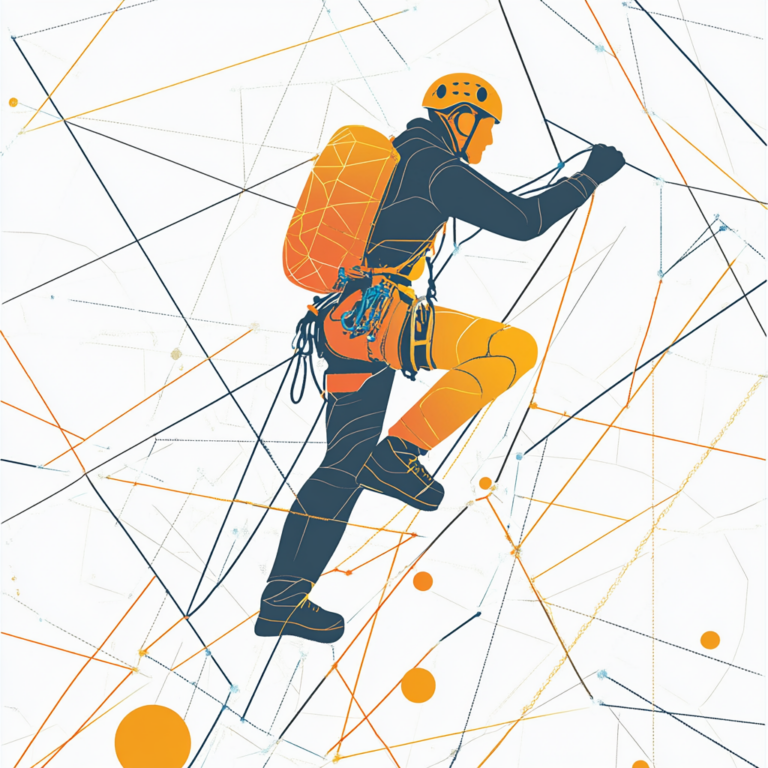Mastering Knot Craft and Knot Passing
In rope rescue and rigging, the ability to skillfully create and manipulate knots is more than just a basic requirement—it’s an essential part of ensuring safety, efficiency, and success in the field. Knot craft and knot passing are not isolated skills; they are deeply interwoven techniques that, when mastered, allow rescuers and riggers to perform complex tasks with confidence.
The Foundation of Knot Craft
Knot craft forms the bedrock of rope work, offering a versatile toolkit for securing loads, creating anchors, and managing rope systems. Understanding the purpose and application of various knots is crucial. For example, the Figure-Eight Knot serves as a reliable stopper knot, preventing the rope from slipping through equipment. In contrast, the Bowline Knot is perfect for forming a secure loop that can withstand tension without slipping, making it ideal for securing harnesses during rescue operations.
These foundational knots are not just for basic tasks; they set the stage for more complex rigging systems. The interplay between different knots becomes critical when managing loads over varied terrains or when transitioning ropes over edges. For instance, the Clove Hitch allows for adjustable anchoring, a feature that becomes invaluable when needing to reposition ropes during an operation.
Learn more about these essential knots at Rigging Lab Academy:
The Dynamics of Knot Passing
Knot passing is a technique used to move a knot through a system, particularly over edges or through pulleys, without compromising the system’s integrity. This skill is crucial in scenarios where ropes need to be adjusted without disconnecting or unloading the system—a common requirement in both rescue operations and industrial rigging.
Consider the scenario of a rope passing over an edge during a high-angle rescue. The rope’s movement could potentially cause friction and wear, which might lead to failure. Here, the correct use of knot passing techniques, such as deploying edge protection and understanding the dynamics of how the knot interacts with the edge, ensures that the operation proceeds safely and efficiently.
Moreover, in systems that utilize Mechanical Advantage—like the Z-rig or other pulley systems—knot passing must be done carefully to maintain the mechanical advantage and prevent the system from losing tension. This process might involve temporarily unweighting the rope, passing the knot, and then re-weighting it, ensuring that the load is always controlled and secure.
For more insights on knot passing, explore these resources:
The Interplay Between Knot Craft and Knot Passing
Knot craft and knot passing are not separate disciplines but are instead two sides of the same coin. The effectiveness of a knot in a rigging system depends not only on how well it is tied but also on how it interacts with the other components of the system, especially when it needs to be passed through or over obstacles.
For example, when setting up a Tandem Prusik Belay system, the Prusik knots must be carefully managed to pass smoothly through any transitions while maintaining their grip on the rope. This process requires a deep understanding of both the knots themselves and the dynamics of the system they are part of. The Prusiks must engage correctly after the knot has passed to ensure that the system remains secure.
In more complex scenarios, such as those involving Artificial High Directionals (AHDs) like the Arizona Vortex, the rigging becomes even more intricate. The interplay between different knots and their ability to pass through various parts of the system without causing instability is crucial. The AHD system must manage multiple vectors and forces simultaneously, with each knot playing a vital role in maintaining the system’s overall stability and safety.
Dive deeper into these advanced systems:
Advanced Applications and Integrations
As one advances in their understanding of knot craft and knot passing, these techniques become integral to more complex rescue and rigging scenarios. For instance, in highline rigging, where ropes span great distances under significant tension, the knots used must not only be secure but also capable of passing through pulleys and other components without causing disruption.
Similarly, in industrial rigging, where loads are often heavy and the consequences of failure are severe, the integration of knot craft and knot passing techniques ensures that operations are conducted with the highest level of safety and efficiency. Whether it’s the careful transition of knots through a mechanical advantage system or the secure anchoring of a load using a combination of knots, these skills are vital.
Explore advanced knot applications here:
Conclusion
Knot craft and knot passing are essential, interwoven techniques in rope rescue and rigging. Mastering these skills requires not only an understanding of individual knots but also a deep appreciation for how they interact within a system. Whether you are performing a high-angle rescue, managing a mechanical advantage system, or setting up an artificial high directional, the interplay between knot craft and knot passing will determine the success and safety of your operation.
For those looking to deepen their expertise, Rigging Lab Academy offers a wealth of resources and training materials. By integrating these techniques into your practice, you can enhance your capabilities and ensure that you are prepared for any challenge that comes your way.
Peace on your Days
Lance










